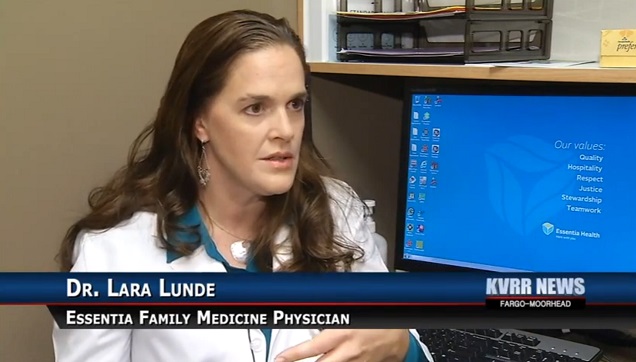
It’s been another busy week. With yet more bans on indoor vaping, anti-THR research, a litany of litigation, more “think of the children” nonsense designed to drum up support for restrictions on vaping and public health advocates starting to wonder how they should reconcile their evidence-free opposition to vaping with the growing body of evidence that it’s much safer than smoking, it’s the Week in Vaping.
Tobacco Harm Reduction Research

A new study of e-cigarette marketing has led to claims that it may enhance curiosity and encourage vaping among young adults. The study itself is paywalled, but involved splitting a group of young adults at random, then showing half e-cig ads and the other half something unrelated (as a control). Those who’d never smoked or vaped who saw the ads were more likely to have tried vaping six months later, but it had no impact on their smoking. Curiosity was the key factor identified in their experimentation.
Clive Bates has published another blog post detailing the continuing efforts to have the misleading New England Journal of Medicine formaldehyde study retracted. As well as reiterating the abundant issues with the study – i.e. the complete ignorance of the “dry puff” phenomenon – Bates points out how the study is being used to lobby governments to ban e-cigs (in Malaysia), how the authors went on to receive a $3.5 million grant (which Bates rightfully calls “misallocation of American public money”) and how a report from a tobacco company on the issue is more reliable than the NEJM study.
There’s been a new study on smokeless tobacco that has led to claims that “smokeless tobacco is more toxic than cigarettes” but that really found no such thing. The study looked at levels of nicotine, nitrosamines and other chemicals in the blood and pee of exclusive smokeless tobacco users or exclusive smokers, finding higher nitrosamine levels and nicotine levels in smokeless tobacco users. Brad Rodu points out that this is basically meaningless, since actual real-world data on the health outcomes of smokeless tobacco users show effectively no increase in cancer risk.
Legislation, Regulations and Vaping Bans

Commissioners in Sedgwick County, Kansas are considering whether to ban vaping in county buildings, with Commissioner Jim Howell speaking out on behalf of e-cigarettes as a harm reduction approach, and arguing against a ban. Critics pointed out he received $1,100 from tobacco companies between 2011 and 2013, insinuating he’s been bought out by the industry, but they somehow had no issue with the $2,750 he received from groups pushing for a ban on vaping.
Prince George’s County in Maryland has passed a bill banning vaping anywhere smoking is banned, with the exception of the upcoming MGM Casino Resort. This exception earned the ire of anti-smoking groups, who claimed exposed workers could file lawsuits.
Kansas City, Missouri and Kansas City, Kansas have voted to raise the minimum age for buying tobacco products – including e-cigarettes – to 21. Bizarrely, though, the legal age for smoking (rather than buying) is still 18.
The city of Laredo, Texas has proposed banning use of e-cigs indoors, based on the standard mix of misinformation and fear, epitomized in the statement from the associate health department director that nicotine causes cancer. In case it needs clarifying, this is totally and utterly false. McAllen, Texas approved an indoor vaping ban this week, too.
Pierce County, Washington’s proposed ban on indoor vaping and the possession of e-cigs by youth has passed. Vape stores will have to get a $375 license each year, which raises to $565 for stores that want to allow sampling, which is the only exception to the indoor vaping ban.
Michael Siegel has submitted a comment to the Office on Information and Regulatory Affairs regarding the FDA deeming regulations for e-cigarettes, which is available to read in full. He also met with office staff to discuss the regulations.
Vaping is to be banned at several train stations in England starting December. Never mind the lack of risk from vaping at outdoor platforms (or indoors, for that matter), they’re just banning them anyway.
Vaping News, Blog Posts and Other Stuff
A fantastic article by Jim McManus talks about the E-Cig Summit (where he gave a talk), and about how and why he changed his mind on the issue of vaping. It’s a passionate call to others in the public health community to look at the evidence free from pre-existing bias, to challenge their entrenched views and to respect the wishes of smokers.
A patent dispute between Fontem Ventures (who own Hon Lik’s original patent for e-cigs and are working with him – more on the lawsuit here) and NJOY has been settled, with Fontem granting NJOY a non-exclusive, royalty-bearing license. Further details are thin on the ground, though.
Exploding e-cigarettes have prompted three lawsuits against manufacturers, with the focus being on the lithium-ion batteries used in e-cigarettes. You know: the same ones you find in your phone, laptop, tablet, and pretty much any electronic device.
Five Pawns is also being sued over the diacetyl and acetyl propionyl in their e-liquid, particularly because they denied their presence when asked by customers despite already being well aware the juices contained them. There’s more on this story in our post from when it first broke.
The upcoming vaping documentary A Billion Lives has released some new footage this week, featuring excerpts from an interview with Clive Bates and a disturbing selection of lies being told about e-cigarettes. The film is set to be released next year.
A paywalled article in the Wall Street Journal has reported that the growth of e-cigarettes has slowed, and although the industry is still growing, the meteoric rise of the past few years is settling down a little now. This may be due to anti-vaping messages, restrictions on their use or many other factors.
Journalist Paul Raeburn has criticized Joe Nocera’s “e-cigarette crusade” in an article for Health News Review, comparing his support for e-cigarettes in the face of scientific uncertainty to climate change denial and the obstinate refusal to accept overwhelming scientific evidence supporting evolution.
Michael Siegel has published a post about a revealing email from a state health department tobacco controller to Stanton Glantz, which states:
Throughout the last six months my colleagues and I have been hearing professionals refer to e-cigarettes as harm reduction. A few months ago I was attending a Youth Engagement Alliance webinar where Dr. Terry Pechacek was presenting. During his presentation, he made it sound like e-cigarettes are harm reduction and mentioned moving all current cigarette smokers to exclusive use of e-cigarettes. Then a few weeks ago after meeting with an individual who works at our state health department he stated that he had heard something similar at a conference he attended a few weeks ago by Dr. Brian King.
Now we are seeing more and more information come out to the public referring to e-cigarettes as less harmful than cigarettes. How should public health advocates respond to statements like this from well-known individuals when a large amount of our work has been focused on educating on the harms of e-cigarettes?
Clearly, the truth is getting in the way of their pre-determined ideology. It’s unclear how the email was obtained, but it’s well-within the realms of possibility.
The Welsh Health Minister Mark Drakeford has continued in his habit of spouting unsubstantiated nonsense about e-cigarettes in support of his proposed indoor vaping ban, coming out with the howler:
The E-cigarette industry has targeted children absolutely ruthlessly and there is no ambiguity about that. Targeting them in terms of advertising and flavours, with over 10,000 varieties including bubble gum. They have gone out of their way to target children.
By “there’s no ambiguity,” he clearly means “I’m trying to exploit any ambiguity to claim they’re targeting youths.” The Vaped Crusader has done a great post on the “wibbly wobbly world of Mark Drakeford” offering some much-needed mocking.
Carl V. Phillips has published two posts analyzing the FDA regulation of e-cigarettes and looking at the issues supposedly being addressed by the regulations individually, as well as the likely consequences of radical policy action.
A post with the extreme title “Will Vaping Kill Me?” offers an objective look at the 95% safer figure, specifically why it isn’t 100%. The experts interviewed point out that the 5% is to account for potential residual harms from things like flavorings, and the general uncertainty in the absence of long-term data.
Guide to Vaping has put together a list of the 5 best vaping setups for under $50, showing that you don’t have to spend a lot to get some solid vaping gear. We also have a top 10 list of e-cigs under $50, for anyone interested.
The Ashtray Blog has some useful tips for winter vaping, addressing the impact of temperature on your batteries and e-liquid, and offering tips on how to minimize it.
Bill Godshall’s latest THR update has been published. Many of the stories have been linked in previous editions of the Week in Vaping, but it’s a great resource for getting everything in one place.
Bullshit of the Week – “An eighth of a teaspoon [of e-liquid] could poison a five year old”

The amount of nicotine needed to poison a child seems be decreasing, if you believe news reports like this one. Dr. Lara Lunde claims just an eighth of a teaspoon of e-liquid is enough to poison a five-year old child. It seems like not that long ago a teaspoon or maybe half a teaspoon was the go-to amount, but Lunde has taken it upon herself to take this even further.
Bernd Mayer’s demolishing of the oft-repeated 0.5 to 1 mg/kg figure for nicotine’s toxic dose estimates that the minimum LD50 is 6.5 mg/kg. For a 40 pound child (roughly average for a five year old), a potentially fatal dose would be 117 mg. But the problem with just making stuff up like Lunde is that you back yourself into a corner. For a 24 mg/ml e-liquid, there’d be under 18 mg in an eight of a teaspoon, way less than the evidence-based estimate for the toxic dose of nicotine.
Lunde isn’t content with her contribution to misinformation about vaping yet, though:
People think that e-cigs are going to help them get off tobacco. There is zero evidence to support that claim. Zero.
Zero? You better tell the people at the Cochrane Collaboration, then, because it seems the scientists who wrote the review of e-cigs for quitting smoking were undergoing a bizarre shared hallucination in which they thought they’d found quite a bit of evidence to support that claim.
More evidence on this is needed, but to claim there is none is either a sign of rank ignorance on the topic or one of deliberate deception.
Check Back Next Week for More!
That’s it for this edition of the Week in Vaping! If we’ve missed an important story, let us know in the comments! And if not, we’ll be back with more vaping news, research, regulations and your weekly dose of nonsense next Sunday!

